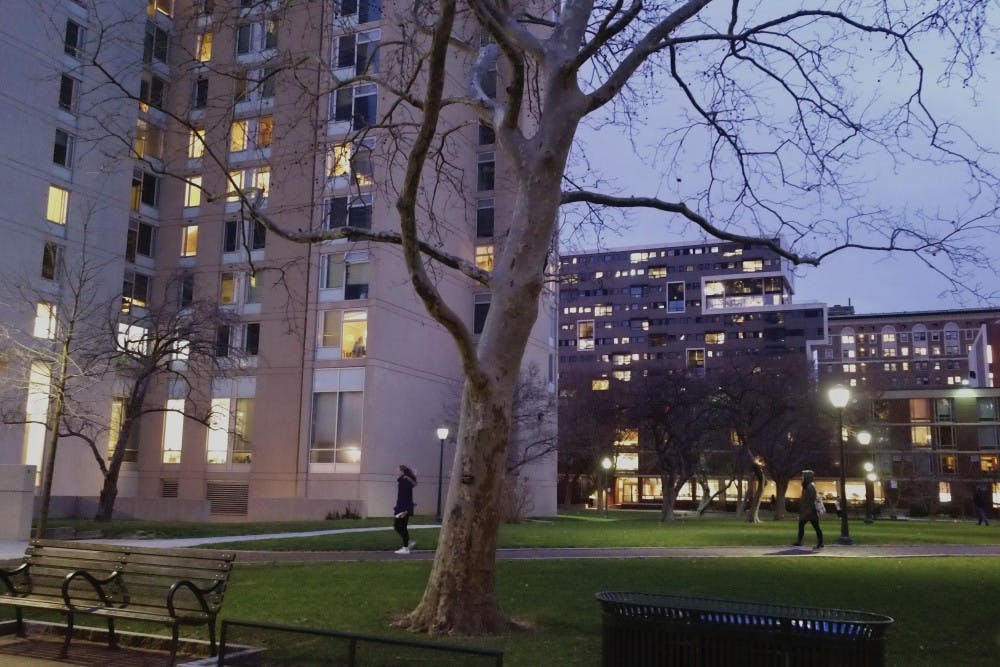
When I first visited Penn, what caught my eye, oddly enough, wasn’t the stunning architecture of the quad, where I currently happily live, but the high rises. Maybe it was because the “NYC” in me thought it was the closest thing to living in an apartment building in Manhattan, or maybe it was because I thought the large number of floor-to-ceiling windows would provide a beautiful view of the Philadelphia skyline. Whatever it was, I knew that I wanted to live in them for at least one year.
My dream came true, but at a huge cost. This year’s housing process was extremely flawed. In typical Penn fashion, the lottery-based time slots fostered unnecessary competition among students, and when coupled with unexpected differences in housing prices, resulted in extreme inequities.
Step one was to consider the desired building and room constellation and create a group of roommates based on that. Nowhere in Penn’s on-campus housing brochure did it list the prices for the rooms, nor did it suggest that the prices would be different for different rooms, which I later found out, after speaking with Penn Residential Services, was intentional — the more information on the brochure, the less visually effective. Naturally, students assumed they could choose whichever room they wanted. Only after the groups were already well-established did students learn from checking the website that there were, in fact, pricing differences among the different buildings and room types, and huge ones at that.
It turns out that, while a single, double, and three-bedroom quad in the high rises cost $10,200 for the academic year, any other type of room in the high rises, including the more plentiful four-room quads, cost an additional $4,000 per person, which, to boot, would not be covered by Financial Aid. Clearly midterm exams and papers are not enough stressors for students; they should now have to worry about paying for on-campus housing.

Chaos ensued. Those who didn’t want to spend, or couldn’t afford, the extra $4,000, had to shift gears entirely. While it was possible to stay in a group of four and hope to live in the less expensive Du Bois, Gregory, or New College House, those buildings had very few quads. Another possibility would have been three-bedroom quads in the high rises, but that would have required two people to share a room. To increase the odds, smaller groups — for singles and doubles — were formed.
Next came the time slots for selection — doled out based on seniority, and then assigned randomly within each class. A few hours into day one, the doubles in the high rises were gone, and shortly thereafter, the singles disappeared as well. The next logical step for these frustrated students would have been to re-create the groups of four and go back to the previously rejected $10,200 three-bedroom quads, but of course, group formation changes were not permitted at this stage.
So perhaps the groups of ones and twos could select rooms within the cheaper quads, and wait for others to fill the remaining rooms. But Penn did not let that happen either, claiming that each dorm-room had to be completely filled.
The waitlist became the next best option, or at least it appeared that way until “open selection” rolled around, and being on that waitlist was the next impediment to choosing a room. Then came a hurried series of phone calls and emails to the housing office, after which the students were taken off the waitlist, but not before they watched room after room disappear right before their eyes, their chances to live in the affordable room they wanted disappearing as well.
I know that there has to be a better process, and frankly, I demand it. I’m all for a lottery, as first-come-first-served would likely lead to repeated website crashes and unnecessary competition amongst the students. But if people receive time slots randomly, how can the room prices be different? And how is Student Financial Services not forced to pay for the higher-priced room, if that was the only room available?
Either make the rooms all cost the same and continue with the lottery process, or make it so that those who receive financial aid and those who simply don’t want to spend an extra $4,000 get priority for the less expensive rooms. Or sit back and watch everybody take their money and move off campus. I know that’s my plan for next year.
HADRIANA LOWENKRON is a College freshman studying Urban Studies and Journalism. Her email address is hadriana@sas.upenn.edu.
The Daily Pennsylvanian is an independent, student-run newspaper. Please consider making a donation to support the coverage that shapes the University. Your generosity ensures a future of strong journalism at Penn.
Donate







